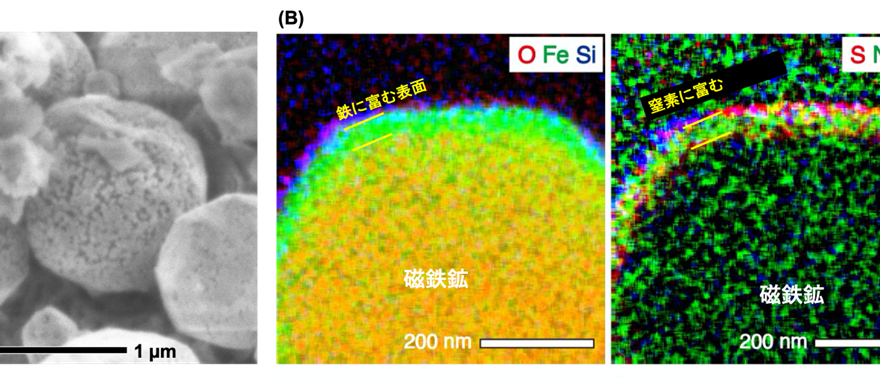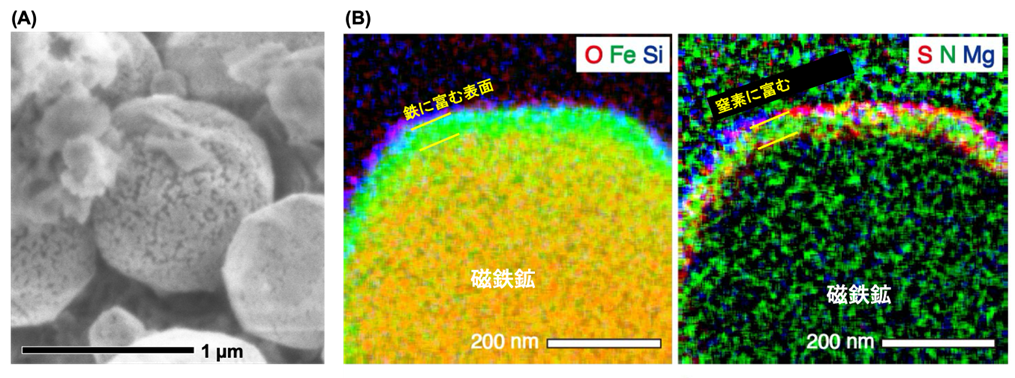[Press Release]
Nitrided Iron Minerals Found on Asteroid Ryugu
-Nitrogen-rich Dust Traced from Far Away in the Solar System

Joint Press Release
Aki Takigawa (Associate Professor, Department of Earth and Planetary Science)
Shogo Tachibana (Professor, Department of Earth and Planetary Science, ISAS)
Icy bodies and comets born far from the sun contain large amounts of nitrogen compounds such as ammonium salts. Such nitrogen-containing solids are thought to be very important as material for life, but no evidence of their transport to the Earth’s orbital region has been found. In this study, we examined sand from Ryugu, an asteroid orbiting near Earth, using an electron microscope and discovered that the very surface of the sand is covered with nitrided iron (iron nitride: Fe4N). Iron nitride is found on the surface of a mineral composed of iron and oxygen atoms called magnetite. We hypothesized that the iron nitride was formed by a chemical reaction on the surface of the magnetite when a small meteorite containing a large amount of ammonia compounds from an icy body hit Ryugu. On the surface of the asteroid, oxygen is lost from the magnetite surface due to exposure to ionic winds (solar wind) from the sun, and metallic iron, which easily reacts with ammonia, forms on the very surface. This is assumed to have promoted the synthesis of iron nitride derived from ammonia on the surface of the magnetite. This micrometeorite may have come from an icy body in the distant solar system, and it is possible that a larger amount of nitrogen compounds than previously realized were transported to the solar system near Earth to provide the material for life.
This work was conducted by a group led by Dr. Toru Matsumoto, a specific assistant professor at the Hakubi Center, Kyoto University; Dr. Takaaki Noguchi, a professor at the Graduate School of Science; Dr. Ryo Miyake, an associate professor; Dr. Yohei Igami, an assistant professor; Dr. Mitsutaka Haruta, an associate professor at the Institute for Chemical Research; and international collaborators, and published online in the British international journal Nature Astronomy on November 30, 2023, in the It was published online in the British international journal Nature Astronomy on November 30, 2023.
Professor Shogo Tachibana and Associate Professor Aki Takigawa of the Department of Earth and Planetary Sciences participated in the research results.

For more information, please refer to the following
Graduate School of Science web: https://www.s.u-tokyo.ac.jp/ja/press/10130/
Publication URL: https://www.nature.com/articles/s41550-023-02137-z

